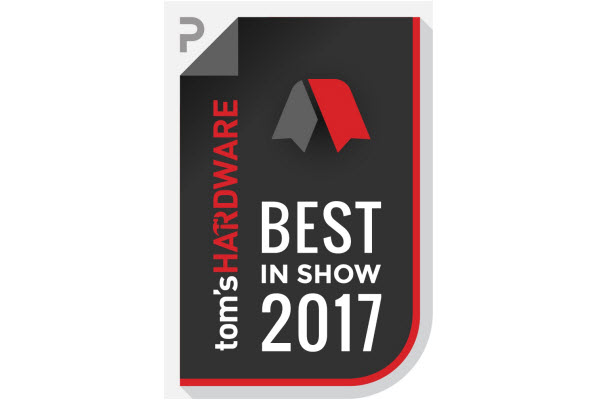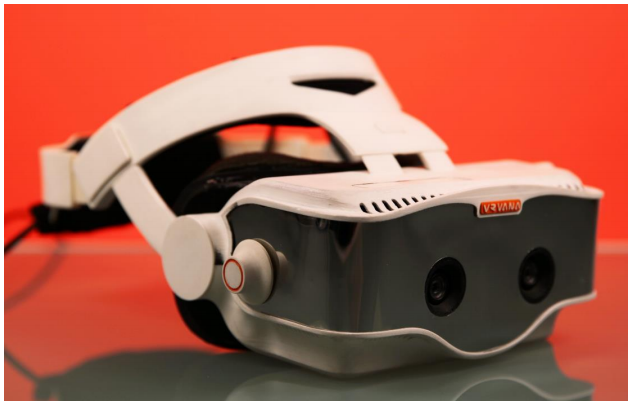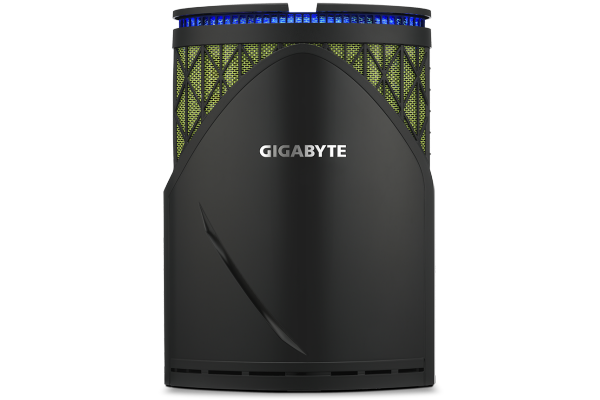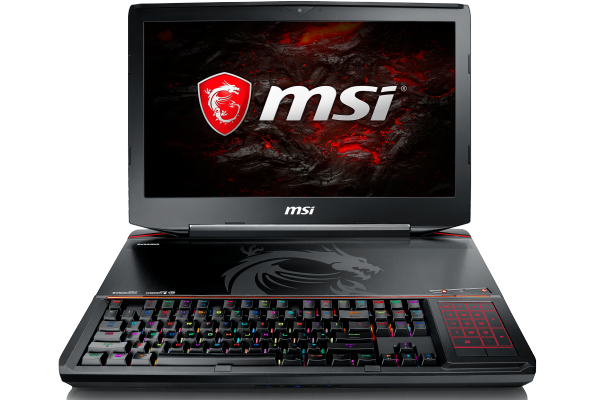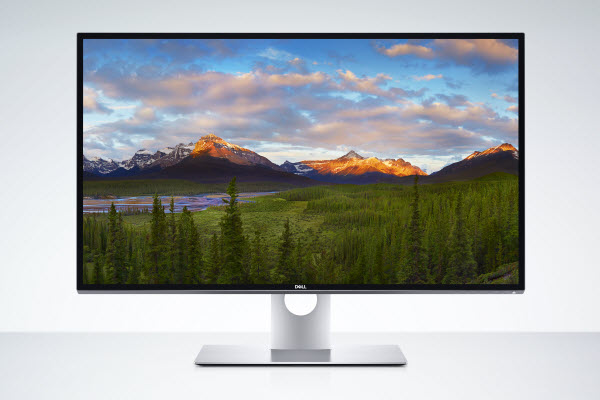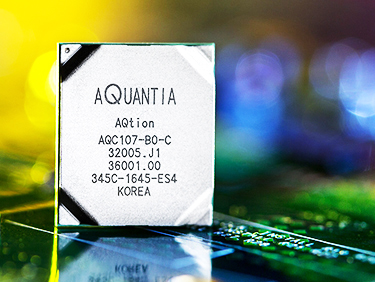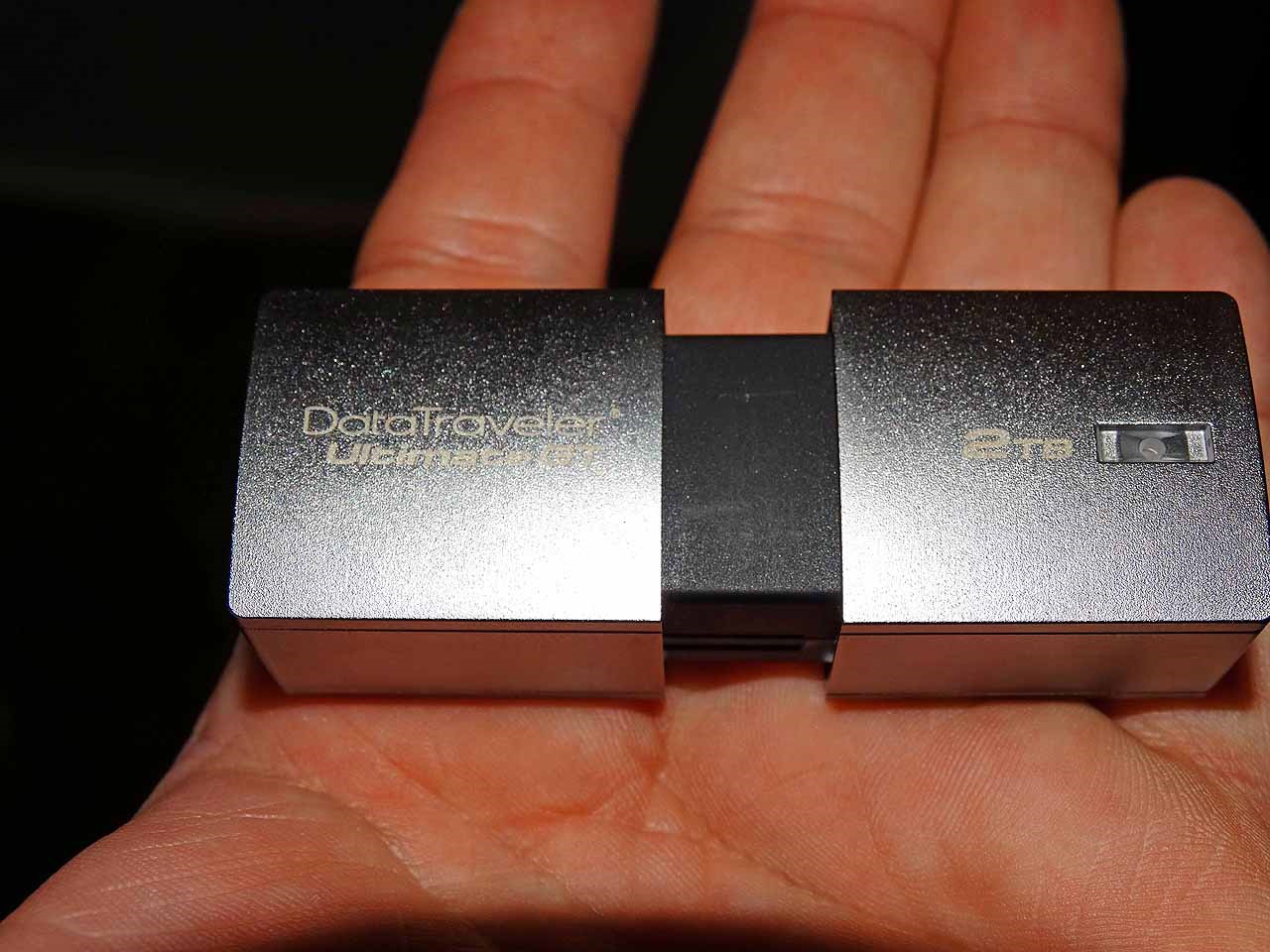Tom's Hardware's CES 2017 Best In Show
CES 2017 Best In Show
We’ve spent a grueling week pounding the floors of convention centers and hotels around Las Vegas for CES 2017, bringing you a veritable firehose of news and product announcements. Now that the show is winding down, we’d like to talk about some of the more interesting items we saw.
Just to set your expectations: This is a show. A showcase for technology, some of it available, but some of it not; some of it affordable, but much of it not. Our attempt here is to fascinate you with what fascinated us. It’s admittedly not all practical, and some of the awards we’re bestowing are, yes, sarcastic (don’t you expect a little of that?). In truth, there wasn’t too much that was real and practical that blew us away or surprised us. In many ways, CES 2017 was–for our crowd, anyway–an iterative endeavor, the marking of an evolution in technology. Kaby Lake arrived, and perhaps that was symbolic. Ryzen didn’t, although we did manage to have some good discussions with the top brass from AMD. We saw more gaming systems, more gaming keyboards, more VR, even more AR, and a few other nifty little tricks and treats, as well.
MORE: All CES 2017 Content
Best In Show
VRvana Totem Mixed Reality HMD
CES 2017 is full of new VR, AR, MR (“XR,” for short) devices, technologies, and experiences. We’ve seen as many as we can. There’s a lot of XR promise all over Las Vegas this week, but also a great many shortcomings. By far, the device that feels the most complete and most advanced is Vrvana’s Totem mixed reality HMD.
It nails some of the important technologies that the XR market needs to master next: inside-out, 6DOF tracking; both VR and AR capabilities (that transition smoothly between one another); hand tracking; butter-smooth camera passthrough; and undetectable lag and latency. Incredibly, this is all on a prototype device.
The Totem HMD does lack eye tracking, and it still must be tethered to a PC, though. It’s also true that we’d already seen and written about Vrvana, and it wasn’t even on display in a booth or suite - the Vrvana team was only giving private demos - but it’s better than any other XR we saw this week.
Get Tom's Hardware's best news and in-depth reviews, straight to your inbox.
Update, 1/8/17, 8pm PT: An earlier version of this article stated that the Totem does not have hand tracking. That is incorrect. The text has been amended accordingly.
MORE: Best Virtual Reality Headsets
MORE: All Virtual Reality Content
Best Gaming System Design
Gigabyte PC
There’s only so much innovation manufacturers can apply to a gaming PC before it looks like a race car engine mated with a serpent in drag. And on the other hand, there are only so many rectangular 6” mini PCs you can see before you’re wishing--just a little bit--for the former. There must be something in between, and that’s what seems to have inspired one of the most tastefully cool mini PCs we’ve seen in a while.
The newest Gigabyte Brix (the model is GZ1DTi7-1070-NK-GW) is not out yet, and we don’t have a firm date for its arrival. Either way, CES is the first time we’ve seen it in person. It looks like a home appliance. It packs a modicum of hardware--an Intel 6th gen (Skylake) 6700K CPU, a GTX 1070 GPU, a 240GB SSD, a 1TB HDD, 16GB of DDR4 memory, and the usual assortment of Wi-Fi, gigabit Ethernet, and various USB ports (the USB 3.1 Type C supports Thunderbolt).
Speaking of which, most of those ports sit under the base of the unit, with enough space to tuck away all the cables, and openings for those cables to peak out and connect to stuff. Very clean. The most fun part: When the unit heats up too much, two flaps on the top automatically pop up to allow more ventilation. Gigabyte calls them Automated Exhaust Vents. They're rather Delorean-like.
Update: 1/9/17, 3:50pm PT: Gigabyte reports that this is called Gigabyte PC. We initially listed it as a Gigabyte Brix device.
MORE: Best PC Builds
MORE: All PC Builds Content
Best Gaming Laptop
MSI GT83VR Titan SLI - 212
Look, if you have to ask, you can’t afford it. But if you just have to play the most taxing game on the planet at the highest possible settings, there are few substitutes for the power packed inside the MSI GT83VR Titan Pro SLI. This thing is massive. It has an 18.4” FHD IPS display, weighs 26.27 pounds, and measures 21.92 x 9.37 x 17.48 inches. It’s not only powered by a Kaby Lake CPU, it has two GTX 1080s in SLI (there’s a dual 1070 version as well), and it comes with a 1TB NVMe SSD and 1TB HDD. It’s got a whopping 64GB of DDR4 memory.
To keep all of this cool, there are vents, vents, and more vents. We recently tested a single 1080-equipped Titan Pro (with a Skylake CPU), and it was the only gaming laptop that really wasn’t bothered by our gaming benchmarks, which used the most demanding settings across several major titles. Furthermore, MSI dropped a mechanical keyboard into this beast--those are Cherry MX Silver (Speed) switches. What's great is that it’s truly a mechanical keyboard; what's not so hot is that it looks like a mechanical keyboard put into a laptop. But this is a go-big-or-go-home product, so nothing’s really out of bounds.
The GTX 1080 version will cost $5,099; the GTX 1070 (GT-83VR Titan SLI 213) version will be $4,199.
MORE: Best Gaming Laptops
MORE: All Laptop Content
Best Monitor
Dell UP3218I 8K Monitor
8K. Is there any need to say more? It's true that this monitor is probably going to fall into the hands of well-heeled professionals, struggle with many forms of content creation, and generally be a solution looking for a good problem. But man, is it gorgeous: 31.5 inches, UHD 8K, 60Hz refresh, on an IPS panel. It covers 100% Adobe RGB and sRGB, 100% Rec709, 98% DCI-P3, and more than 80% Rec 2020. Dell claims a 1300:1 contrast ratio, and the bezels are quite thin at 9.7mm. If you’re wondering how it’s going to connect ot a PC, you’re looking at 2x DisplayPort 1.3. All for the measly sum of $5,000.
You’re not going to run your Microsoft apps on this. Even the Windows start menu is miniscule at this resolution. Downscaling from 8K is probably not something you’ll want to do either. Make no mistake, this thing is for displaying content. (Dell even said as much.) Yes, you can do some content creation, but for the most part, menus are just going to be too small on this screen. And forget about gaming.
Er, so wait, why are we talking about this again? Oh, right, because it’s 8K.
MORE: Best Monitors
MORE: All Monitor Content
Best New Motherboard Feature
5 Gigabit Ethernet
Since Computex, we’ve talked about multigigabit Ethernet coming to the home. The N-BASE-T standard was ratified with two new solutions that operate over existing CAT5e cable, 2.5GBASE-T, and 5GBASE-T, respectfully. ASRock is the first motherboard manufacturer to bring this exciting new technology to a desktop motherboard designed for consumer use.
The Aquantia AQTION controller was tapped to handle the 5-gigabit duties on the ASRock Z270 SuperCarrier, Fatal1ty Z270 Professional Gaming i7, and AM4 X370 Profession Gaming. Marvell has multigigabit reference designs called "community boards" available for switch manufacturers to develop low-cost products needed to usher in this exciting new era. We're starting to move beyond the chicken-or-the-egg stage. Multigigabit will raise the cost of motherboards, switches, and routers, but at least the technology has begun its descent to the market.
Expect to see more ecosystem product announcements in June.
MORE: Best Motherboards
MORE: All Motherboard Content
Best External Storage
Kingston DataTraveler Ultimate GT
If you’ve ever felt the need to lug around 256,000 compressed 24MP pictures (or 70 hours of 4k video) on a USB drive, then Kingston’s 2TB DataTraveler Ultimate Generation Terabyte is the thumb drive for you. Surprisingly, Kingston said the drive uses standard 2D NAND. The densest 2D NAND features 16GB of density per die, which means the DataTraveler packs a whopping 128 NAND dies into its bulky 72 x 26.94 x 21mm case. We don’t know performance specifications, but we do know that it is USB 3.1 Gen 1 compatible, which implies it will be speedy.
Kingston hasn’t announced pricing, but we’re sure it will be nearly as shocking as the capacity (Kingston also has a 1TB model for the more sensible among us). In either case, the drives are still larger than most SSDs--at least the affordable ones.
The new drives will be available in February and carry a five-year warranty. Kingston could theoretically pack 6TB of storage into the same case with 3D TLC NAND, so perhaps we have something to look forward to next year.
MORE: Best SSDs
MORE: All SSD Content
Biggest Waste Of Space
SATA Express
We’ve noticed the continuing proliferation of SATA Express ports that soak up valuable space, not to mention connectivity, on nearly every new Z270 motherboard.
Unfortunately, SATA Express was dead on arrival, and it will never experience a resurrection. There hasn’t been a single SATA Express storage device available at retail, ever, and according to every storage company, there never will be. The popular M.2 port replaced SATA Express well before it even made it to market, but the motherboard vendors apparently didn’t get the memo.
The ill-fated Western Digital prototype, which made its debut at Computex 2014, is the only SATA Express drive we’ve seen —and we haven’t seen it since (an SSD/HDD combo is always a bad idea). Yet the motherboard manufacturers have told us that they continue to offer SATA Express ports simply because, essentially, everyone else is.
U.2 ports have also become ubiquitous even though Intel’s aging 750 SSD is the only SSD that takes advantage of the port and its bulky wiring. We’re told that Intel insists upon the U.2 ports largely because they have a new SSD in the works, but the ports will find limited use if the next iteration of the 750 Series is as expensive as the current products.
It’s disappointing to see motherboard vendors continue with the pointless SATA Express connection, but we expect many vendors will drop it with next-generation products. Perhaps jettisoning the SATA Express ports will make way for other useful features, such as more LEDs. Meanwhile, the U.2 port is likely here to stay, but at least there is a single SSD that can take advantage.
MORE: Best SSDs
MORE: All SSD Content
Best Gaming Laptop (That You Can Actually Afford)
The Generic $1,100 Laptop [Insert Favorite Vendor Here]
We’d like to have been able to award a gaming laptop for being affordable, but we can’t pick just one. The upside is that there are seemingly more than you could count. By "affordable," we mean under $1,500, but now we’ve seen a host of gaming laptops under $1,000. These usually include a Kaby Lake CPU and a GTX 1050 or 1050Ti GPU, and skimp a bit on things like storage.
At CES, every single gaming laptop manufacturer refreshed their entire lineup to include, merely, Kaby Lake. Most of those manufacturers also offered a new model or two on the low end with those 1050 parts. And most of the laptops in these price ranges turn out to look and act and perform about the same. So we can’t pick just one. We’ll say congratulations (and thank you?) to Acer, Alienware, Asus, Gigabyte, and MSI (these are the ones we saw; there are likely others).
MORE: Best Gaming Laptops
MORE: All Laptop Content
Best First-To-Market
Roccat Isku+ Force FX
We believe that analog keyboard input is going to be something that gamers will be pining for once they get a chance to play with it for an extended period of time. Wooting and Aimpad are doing some groundbreaking work in that regard, but neither has a shipping product yet.
Roccat, out of the blue, does have a finished keyboard--the Roccat Isku+ Force FX. Granted, Roccat’s implementation of analog input is fundamentally different from Wooting and Aimpad in nearly every way. Further, it’s achieved analog capabilities on a membrane keyboard, not a mechanical one, which will certainly put off some gamers.
However, Roccat deserves an award for being the first to get this compelling technology onto the market and into (er, under) the hands of gamers.
MORE: Best Deals
MORE: All Keyboard Content
Most Improved
CyberpowerPC Prostreamer II
Last year, we selected CyberpowerPC’s Prostreamer dual-system gaming and streaming desktop as the Most Innovative Gaming System in our top CES picks. This year, we’re inclined to endow the Prostreamer II with the title of Most Improved Gaming Desktop of CES 2017 for its impressive evolution.
Whereas the first rendition of the Prostreamer left little wiggle room and could accommodate up to a only a micro-ATX motherboard (for the main gaming system), its successor features a larger, more robust chassis with space for an ATX motherboard, two power supplies, and significantly more storage devices. It also sports a hinged tempered glass side panel.
The mini-ITX motherboard has been repositioned to the lower half of the case and turned upright, giving the chassis better thermal dissipation and a sleek look. The I/O and power switch are now all in the same location (the previous version split each system’s front panel and power buttons into two different parts of the case), and the overall design is both intelligent and sophisticated. The Prostreamer II is indicative of CyberpowerPC’s commitment to evolve, and we think that’s worthy of recognition.
MORE: Best PC Builds
MORE: How To Build A PC
Tom's Hardware is the leading destination for hardcore computer enthusiasts. We cover everything from processors to 3D printers, single-board computers, SSDs and high-end gaming rigs, empowering readers to make the most of the tech they love, keep up on the latest developments and buy the right gear. Our staff has more than 100 years of combined experience covering news, solving tech problems and reviewing components and systems.
-
os2wiz Ypour failure to award Ryzen a place of distinction is a total copout. Yjhe product is already going into production. It will be out there for sale in mid Fegruary. There have been several benchmarks that are impressive. They have allowed people to open the competing machines for inspection. This item is NOT smoke and mirrors. It is totally unworthy of this website to deny AMD the accolades it well deserves . There is now real competition unfiolding in the cpu arena and all of us will benefit from it. Also Vega is near release in the next couple of months and it shined. Tou have failed the users on this website. Failed them miserasbly. Fence sitters!Reply -
alextheblue Although I don't feel that strongly about it, I am a little surprised Ryzen didn't get a mention. I mean, Razer's triple-screen device might not even make it to market. Ryzen is almost here, and represents AMD's best bet to catch up with Intel in a long time. Vega we haven't seen enough substance on yet, so I can understand why that wouldn't get a mention. But functional Ryzen chips and AM4 boards were on hand.Reply -
photonboy RYZEN didn't arrive. Read the article. They had a discussion but they can't talk about "best of CES" for a product that wasn't physically even there.Reply -
CaedenV @OS2WizReply
Maybe you didn't notice, but this was an article about CES. AMD was not at CES. AMD may be coming to market with a product soon, but we do not have a release date or price yet. There were no announcements about the product made at CES... so.... ya, that is why it was not talked about. -
DirtPoorGamer I understand that this would never happen with SATA Express, but there was a time when all new motherboards came with USB ports and there were no USB devices available. I remember telling people "Just wait, they are coming."Reply -
sillynilly 8K makes it garbage in my book. So what? It's useless for the VAST majority of folks. Come on - let's stop the Ksanity here. 4K is plenty and anything beyond at the standard monitor size becomes ridiculous (as mentioned the start menu is impossible to see and why scale down a monitor?) Silly silly silly Dell monitor. Your opinion may vary.Reply -
Crashman U.2 supports NVMe drives ET AL. You don't need to rely on one drive, you need to demand more adapters. The reason you should demand U.2 to M.2 bay adapters is that some of these motherboards have run out of space for M.2 cards.Reply
OK now, there have been many SATA-Express devices, but all were front-panel USB 3.1 breakout panels with onboard controllers that used the SATA output. I believe ASRock and Gigabyte both did those, so there's some reluctance to ditch them completely, but there shouldn't be THREE of that danged things on a modern board. -
nutjob2 Reply19124694 said:8K makes it garbage in my book. So what? It's useless for the VAST majority of folks. Come on - let's stop the Ksanity here. 4K is plenty and anything beyond at the standard monitor size becomes ridiculous (as mentioned the start menu is impossible to see and why scale down a monitor?) Silly silly silly Dell monitor. Your opinion may vary.
"640K should be enough for anyone." -
Crashman Reply
Does that response indicate that you believe human eyes will progress to reading smaller and smaller text from greater and greater distances?19126749 said:19124694 said:8K makes it garbage in my book. So what? It's useless for the VAST majority of folks. Come on - let's stop the Ksanity here. 4K is plenty and anything beyond at the standard monitor size becomes ridiculous (as mentioned the start menu is impossible to see and why scale down a monitor?) Silly silly silly Dell monitor. Your opinion may vary.
"640K should be enough for anyone."
